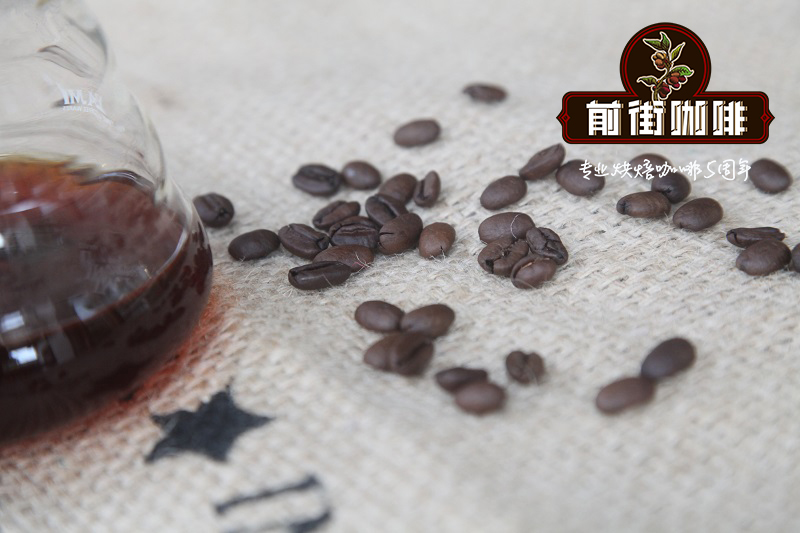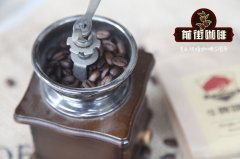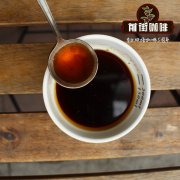What are the coffee bean honey processing methods? Coffee honey drying process? Coffee Bean Honey

Professional coffee knowledge exchange more coffee bean information please follow the coffee workshop (Wechat official account cafe_style)
What are the ways to treat coffee and bean honey? The drying process of coffee honey treatment? What kind of coffee is suitable for cooking with coffee and bean honey?
Coffee fruit ripe bright red, because the appearance is similar to the shape of a cherry, also known as "coffee cherry" (coffee cherries), to talk about a variety of raw bean treatment, let's first understand the structure of coffee fruit, from the outside to the inside is the peel → pulp → pectin layer → sheep skin (seed shell) → silver → seeds.
The thickness of the pectin layer is about 1-2mm, which can be imagined as the translucent substance outside the tomato seeds, which is difficult to remove, but the raw beans we usually buy are actually the innermost seeds (the seeds will contain some residual silver skins). No matter which method of treatment, the purpose is the same-peeling and taking beans. Based on the consideration of economic cost and climate and other natural environmental conditions, there are different ways of treatment, so what kind of flavor will be produced by different treatment methods?
At present, the main treatment methods are: sun treatment, water washing and honey treatment.
The sun exposure is to directly expose the coffee fruit before removing the shell and pectin layer; the water washing method is to screen the coffee pulp before exposure and ferment to remove the pectin layer; the honey treatment law is between the sun method and the water washing method. After the coffee pulp is screened, the pectin layer is directly retained and exposed.
🔆 tanning method:
Tanning is the oldest, most primitive and convenient way to treat raw beans. Spread the harvested coffee cherries to receive direct sunlight exposure, drying the moisture from 60% to only about 12%.
First, screen the floating beans.
Pour the harvested coffee fruit into a big trough, the ripe and full fruit will sink to the bottom of the water, the underdeveloped or overripe fruit will surface, and the floating beans will be removed first.
2. Sun drying
Next, the whole coffee fruit with meat and skin is placed on the bean drying farm to dry, and it needs to be turned several times a day. This process usually lasts about 3 weeks, depending on the local climate. When the water content inside the coffee bean drops to 10-14%, the step of sun drying is completed.
Third, shelling
The dried fruit will be naturally dried, and the dried peel, pulp and sheepskin will be removed by a shelling machine, and the raw beans we want can be taken.
The advantages of sunbathing
1. Simple, cost of treatment (no water is needed except for the steps of removing floating beans, and a bucket of water can be reused with low cost, so it is widely used in areas where water resources are not abundant and less affluent).
two。 Raw beans are naturally dried in the pulp and absorb the essence of the fruit, so the aroma is rich, sweet and mellow.
The disadvantages of sunbathing
1. In some producing areas, the sun treatment does not screen the floating beans, so the quality has its ups and downs.
two。 During the drying process, the pulp is easy to mildew due to the return of moisture, which pollutes the raw beans.
3. The shelling of the machine is easy to hurt raw beans, resulting in appearance defects.
In view of the disadvantages of the traditional solarization method, the water washing method comes along with it.
💧 washing method:
Water washing is a common method of raw bean treatment at present. Use a peeling machine to separate most of the pulp from the coffee beans, then guide the shelled beans to a clean sink, soak them in water and ferment to completely remove the residual pulp layer. Through water treatment, unripe beans and defective beans are selected because of buoyancy, and the fermentation process is easier to control, so the flavor is not mixed like sun beans, but obviously sour, more complex and cleaner. But it is also because it is too "clean" and the richness of the flavor is slightly weaker.
First, screen the floating beans (the same sun method)
Second, remove the pulp
The fresh coffee cherries are fed into the pulp screening machine to remove the peel and pulp, and the immature fruits will be screened at this stage because it is not easy to separate the pulp. After the pulp screening machine, all that is left is pectin, sheepskin and seeds.
Third, ferment to remove pectin
Transfer the peeled seeds with pectin into the fermentation tank. Although the name is washing, it does not really wash away the pectin, but through the fermentation process, the pectin is removed by biodecomposition. The fermentation process is about 16-36 hours, during which the pectin must be stirred frequently to accelerate the separation of pectin from the seeds. Water washing fermentation will produce citric acid, malic acid and acetic acid and other acidic substances, these acid values will seep into the raw beans, making the sour taste of the beans washed more sour than the sun method. After the fermentation is completed, it is really washed-- wash the beans again.
IV. Drying
After washing, you also need to be insolated or machine-dried to reduce the water content to 14%. Washing method because the flesh has been removed, so in the drying process, do not have to worry about easy mildew like the sun method. The dried sheepskin raw beans are not as hard as the sun peels with pulp. They can be obtained by using a sheller to remove the shells.
The advantages of washing with water
1. Raw beans are dark green in color, complete in appearance and sell well.
two。 Since the pulp was removed from the beginning, there is no need to worry about mildew.
3. The sour taste and brightness are higher than those of sun-dried beans, and the flavor is cleaner.
The disadvantages of washing with water
1. The procedure is complex and tedious, so the cost is much higher than that of solarization.
two。 A large amount of water will be used. To get 1 kilogram of coffee beans, it takes 40 murmur50 liters of water, so it is less used in areas where water resources are scarce.
Therefore, 💦 developed the semi-washing method:
An improved treatment method which can reduce the water consumption of traditional washing method
First, screen the floating beans (same as washing method)
2. Remove the pulp (same as washing method)
Third, machine de-pectin
The original washing method is to remove pectin by fermentation, and the improved method is to use a pectin scraper to remove pectin mechanically.
IV. Drying
Using the sun or mechanical drying method to the water content of 10 murmur14%, half-washed beans flavor is between sun-washed beans and water-washed beans, there is no water-washed beans sour, but also not as sweet as sun-washed beans.
🌰 honey treatment method:
Honey treatment does not mean wrapping a layer of honey on the coffee beans! The "honey" here refers to the mucous layer of coffee pulp. After harvest, coffee cherries use a peel machine to peel off the outer peel, leaving the flesh after the sun, so that the sweetness of the pulp can enter into the beans, and it does not have to take as long as the sun method, which is currently a popular treatment.
The production process of honey treatment is complex and laborious. If it is not properly controlled, the whole batch of beans will have the smell of overripe fermentation, but if they are well done, the coffee beans will have a relatively high sense of sweetness. The advantage of honey treatment is that it can reduce the acidity of beans, and the aroma is more meticulous, but this is the taste when the honey treatment is carried out perfectly. If it is not carried out well, it will taste bad acetic acid, like onions or garlic. Even if it is carried out quite well, it will still have a little muddy smell, the aftertaste is not clean, and the miscellaneous smell will be heavier than the general water washing method. Therefore, on the whole, the risk of honey treatment is much higher than that of general wet treatment.
◎ difficult Honey disposal method:
First, in the process of drying, as the sticky pulp layer is still on the coffee beans, it is necessary to turn them with high frequency in the first few days to prevent the coffee beans from sticking together. Therefore, much more labor is needed than the general washing method.
Second, if you can not dry as soon as possible, it is easy to over-ferment.
Third, if it is not turned enough or the overall environment is too wet and too cool, or if the sticky pulp layer is left too thick, the coffee beans will easily get moldy, so some coffee farms will use machines to control the thickness of the sticky pulp layer left behind, so that the coffee beans can be dried more quickly, and their overall taste will be more consistent.
4. Compared with wet treatment, it needs more space and takes longer days to dry.
◎ white honey, yellow honey, red honey, black honey treatment, where is the difference?
Coffee farmers will classify coffee, some will retain less pectin layer so that they can be exposed faster, while others will retain more pectin layer and require longer exposure time.
▪ White Honey (about 5% of murmuri) retains only a few pectin layers.
▪ yellow honey (which retains about 25% of the pectin layer) in order to finish faster during exposure, it must be carried out in a least shaded environment to get a yellow appearance. The light time of raw coffee beans treated with yellow honey is the longest, and the longer light time means higher heat, so this kind of coffee can be dried within a week.
▪ red honey (which retains about 50% of the pectin layer) the raw beans are dried for 2-3 weeks and need some shelter to reduce the light time.
Exposure to ▪ black honey (which retains about 100% of the pectin layer) is usually covered to extend exposure time. The process of black honey treatment is the most complex (because it takes longer to dry, so it takes longer to check to prevent mildew and fermentation of coffee beans), the labor cost is the highest, so it is more expensive.
On the palate, the taste of yellow honey is close to the clearness and purity of washing, while that of black honey is close to the rich fruit aroma and rich texture of sunburn, with red honey in the middle.
Suitable for beans:
Costa Rican coffee is of the most stable quality in Central American coffee, mainly because it grows in the natural environment of complete tree shade and cool rainy night with large temperature difference in the morning and evening. Coupled with the rich soil and stable progress in the middle and rear treatment, Costa Rican coffee has a bad reputation, which has long been an indicator of Central American coffee.
The water treatment method emphasizes that the taste is clear and clean, and the acid is as quick as a razor, while the honey treatment emphasizes that the taste is complex and layered, reducing acidity and increasing sweetness. Washed beans have always been the most important method of coffee treatment in Costa rica. some coffee lovers like the sweet sweetness of honey treatment and the delicate aftertaste of toffee. However, although washed Costa Rican beans do not have pleasant sweetness, but clean, bright and high taste and always meticulous and vibrant acidity, they always maintain a good impression of high-quality coffee in the mainstream with sweetness as the king.
The sharp, bright and thin lemon has always been the impression of Costa Rican waterwashed beans, but Rose Manor deviates from this impression and attracts our attention with the pure, light, impurity-free aroma of alpine tea. we do not recommend heavy baking (second burst start) because the nutty aroma with chocolate can be found in honey-treated Costa Rican coffee.
In front of the street hand rush reference:
Use v60 filter cup, 15 grams powder 32 grams of water steaming for 30 seconds, 89-90 degrees water temperature extraction, 1:15, fine grinding small Fuji 3.5 second water injection to 110ml cut off, wait for water drop and then slowly water injection, uniform speed, the water level should not be too high, again water injection to 233ml stop, extraction time 2:15 seconds-rich sweet sun, we can fine-tune according to their own taste.
Important Notice :
前街咖啡 FrontStreet Coffee has moved to new addredd:
FrontStreet Coffee Address: 315,Donghua East Road,GuangZhou
Tel:020 38364473
- Prev

The way of coffee and bean honey treatment? The taste of black honey treatment? How many kinds of coffee honey are treated?
Professional coffee knowledge exchange more coffee bean information please pay attention to the coffee workshop (Wechat official account cafe_style) coffee bean honey treatment method? The taste of black honey treatment? How many ways are there to treat coffee honey? Coffee is a kind of agricultural products, fresh is one of the indispensable elements of good coffee. When buying coffee beans, you will often see Washed.
- Next

The Origin of Indonesian Kopi Luwak is Indonesian Kopi Luwak delicious?
Professional coffee knowledge exchange more coffee bean information Please follow the coffee workshop (Wechat official account cafe_style) the excellent civet coffee has a hint of aroma, but the palate is rich like syrup and persistent after taste like chocolate scent. In fact, civet coffee is very common in Indonesia, but the quality is uneven, so it is difficult to find high quality civet coffee.
Related
- Detailed explanation of Jadeite planting Land in Panamanian Jadeite Manor introduction to the grading system of Jadeite competitive bidding, Red bid, Green bid and Rose Summer
- Story of Coffee planting in Brenka region of Costa Rica Stonehenge Manor anaerobic heavy honey treatment of flavor mouth
- What's on the barrel of Blue Mountain Coffee beans?
- Can American coffee also pull flowers? How to use hot American style to pull out a good-looking pattern?
- Can you make a cold extract with coffee beans? What is the right proportion for cold-extracted coffee formula?
- Indonesian PWN Gold Mandrine Coffee Origin Features Flavor How to Chong? Mandolin coffee is American.
- A brief introduction to the flavor characteristics of Brazilian yellow bourbon coffee beans
- What is the effect of different water quality on the flavor of cold-extracted coffee? What kind of water is best for brewing coffee?
- Why do you think of Rose Summer whenever you mention Panamanian coffee?
- Introduction to the characteristics of authentic blue mountain coffee bean producing areas? What is the CIB Coffee Authority in Jamaica?

